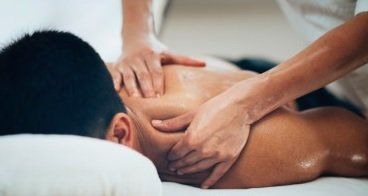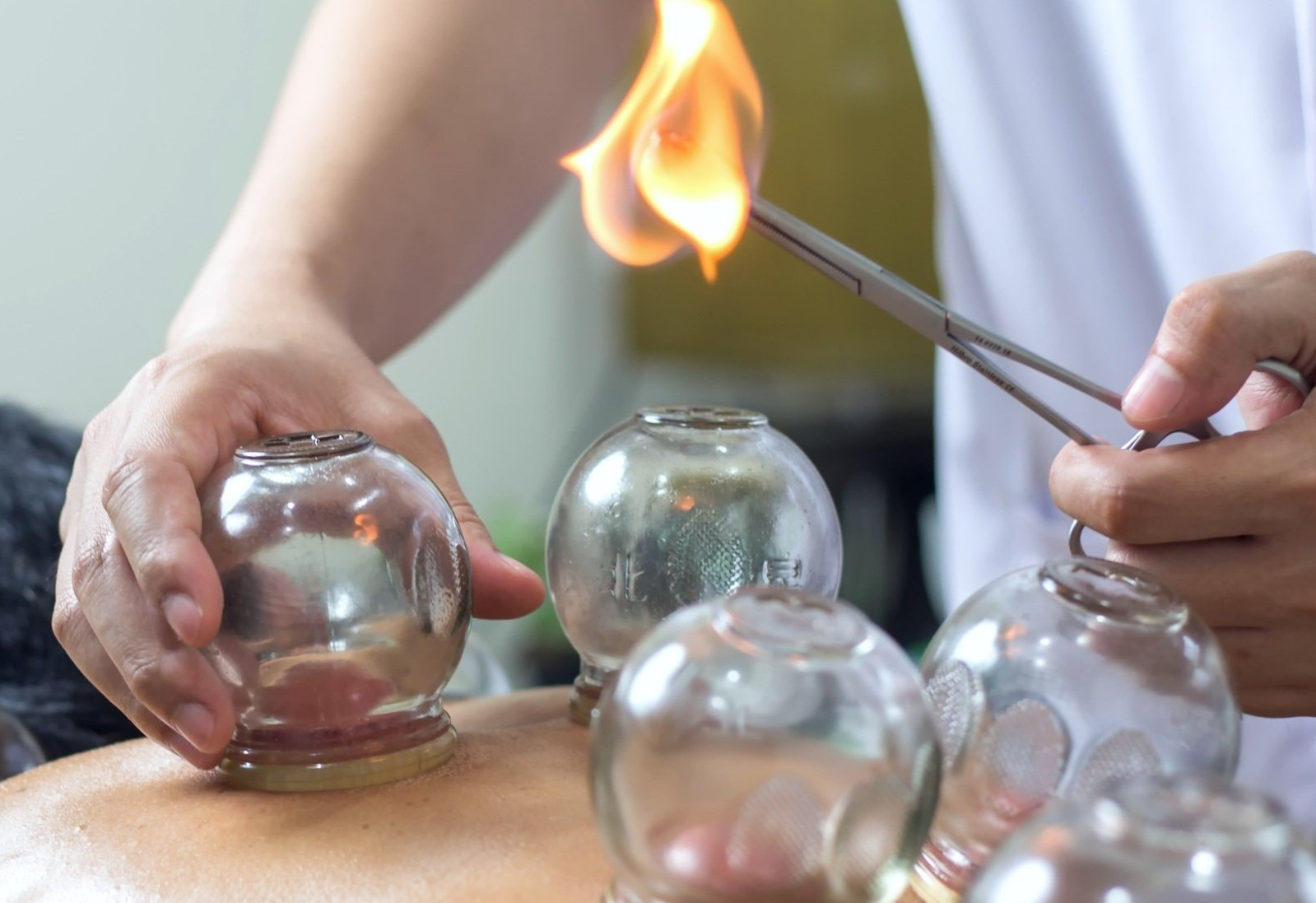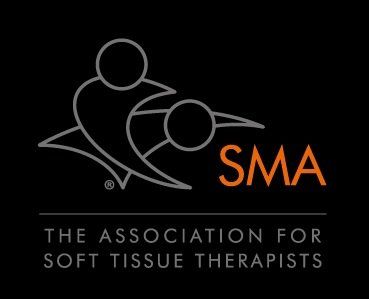Text Neck
- by Joanna Blair
- •
- 24 May, 2023
- •
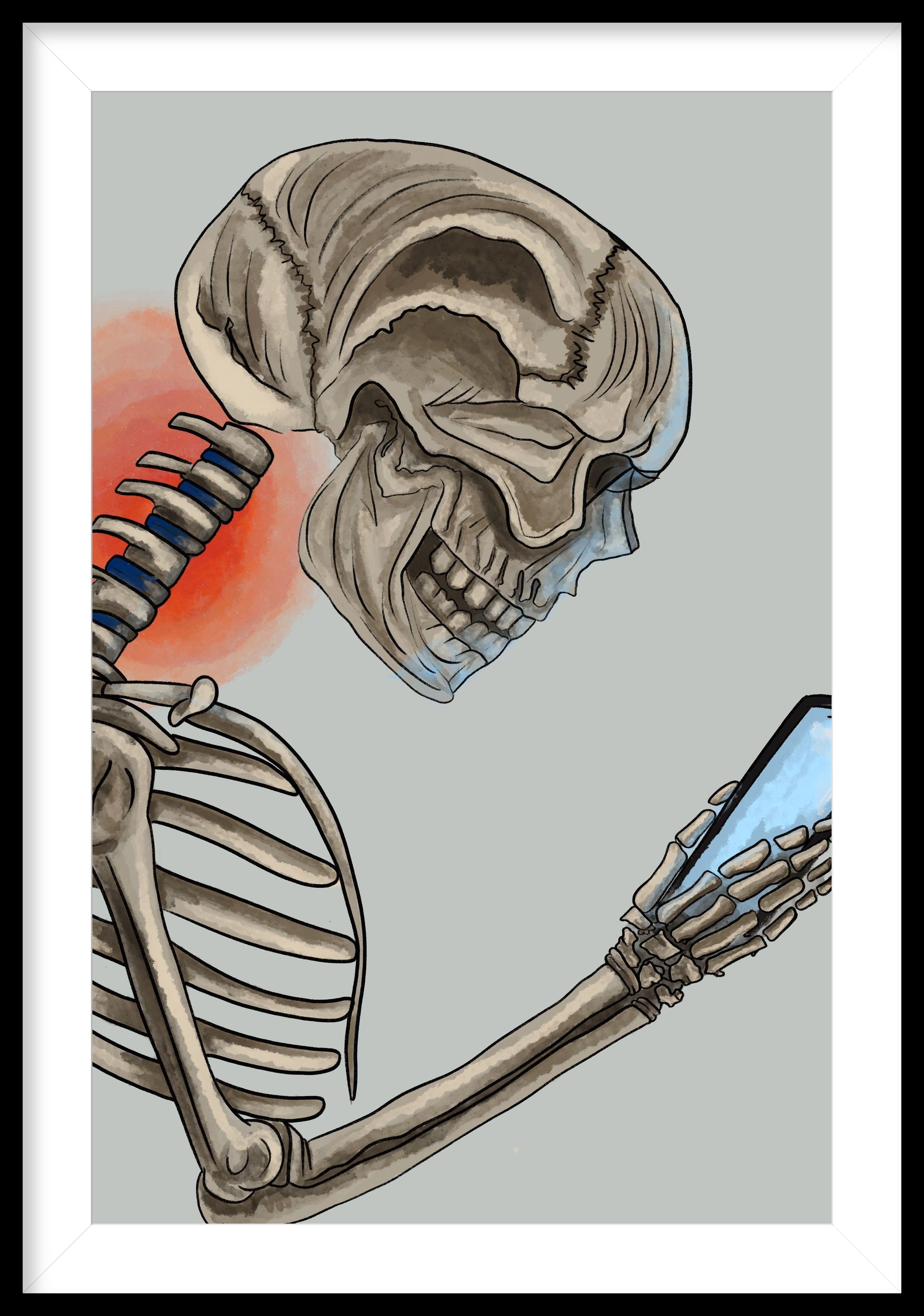
Symptoms of Text Neck
Text neck is not a formal medical diagnosis but a phrase commonly used to describe a repetitive stress injury that occurs over a period of time from excessive use of mobile devices. One study found that on average, smartphone users maintain head flexion of 33 to 45 degrees whilst using their device [1].
The term 'text neck' has arisen from individuals adopting a cervically flexied posture whilst using smart phones. There does seem to be controversy between studies as to whether there is a definitive association of text neck with the intensity of frequency of neck pain after use [1].
The most common presentation of Text Neck is neck pain, stiffness and soreness. The main symptoms include [2]:
- Stiff neck: soreness and difficulty whilst moving the neck especially after long usages.
- Pain: can be localized within the neck or may be diffused over an area and usually within the lower part of the neck.
- Can be described as a dull ache in nature or sharp and stabbing in extreme cases.
- Radiating pain: radiation of pain can often be described into the shoulders and arms.
Forces on The Neck
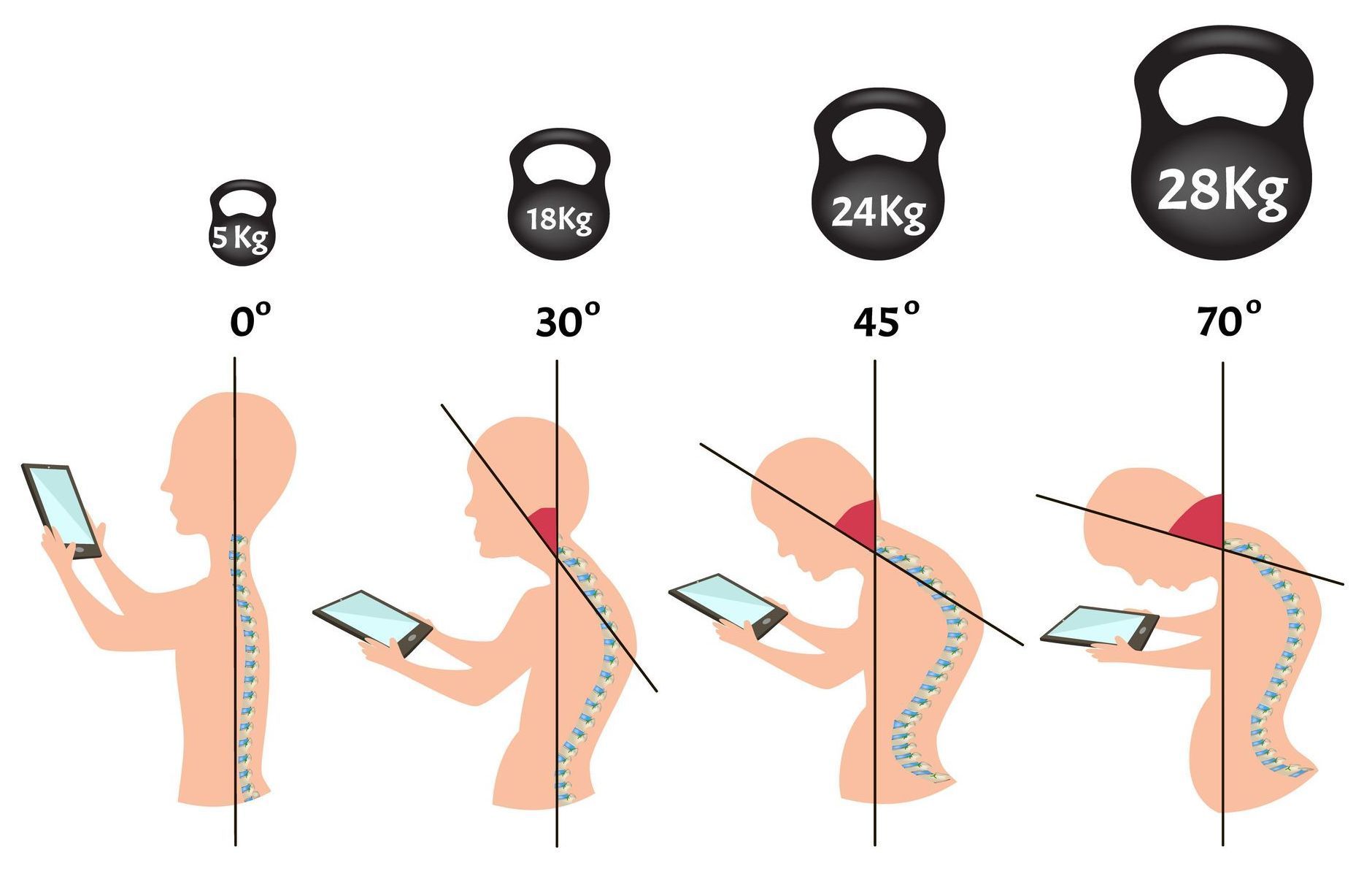
Common Symptoms
- Muscular weakness: shoulders muscles including the trapezius, rhomboids and rotator cuff muscles often weaken.
- Headache: sub-occipital muscle tightness can lead to tension type headaches.
- Upper back pain ranging from a chronic, nagging pain to sharp, severe upper back muscle spasms.
- Shoulder pain and tightness, possibly resulting in painful shoulder muscle spasm.
- If a cervical nerve becomes pinched, pain and possibly neurological symptoms can radiate down the arm and into the hand.
- Flattening of the upper back reducing upper thoracic kyphosis
- Early onset arthritis
- Spinal degeneration
- Disc compression
- Muscle weakness
- Loss of lung capacity
Management
- Avoid excessive mobile phone or laptop/ computer usage and take frequent breaks, setting a timer might be useful.
- Avoid prolonged static postures whilst e.g. sitting or standing.
- Position the mobile device higher during use.
- Avoid high repetitions of movements such as prolonged typing or swiping.
- Avoid holding large or heavy devices in one hand for long periods such as heavy ipads.
Acute Cases

In acute cases, pain relief is the main goal and can be achieved by:
- Regular neck movements: rotations and side flexion.
- Muscular stretching exercises to keep the Neck Healthy.
- Tuck the chin down towards the neck, then slowly raise it up toward the ceiling.
- Rotate the head so that it is looking out over one shoulder, then turn slowly and rotate in the other direction.
- Rotate the shoulders in a clockwise direction while holding the arms down by the sides of the body; repeat in a counter clockwise direction.
At the Leagrave Therapy clinic hands-on physical therapy might involve performing gentle passive mobilisations to the upper back and neck along with stretching techniques as shown above (figure 2) to help reduce muscular tension and aid joint mobility. Soft tissue release techniques may also involve inhibition techniques to muscles under the skull (figure 1).
Chin Tuck Exercises Demonstration Video:
References
- Correia, I. M. T., Ferreira,A. de S., PhD, Fernandez, J., Reis, J. J. F., Nogueira, L. A. C.,Meziat-Filho, N. (2021 ) Association Between Text Neck and Neck Pain in Adults,SPINE, Wolters Kluwer Health, 46; 9: 571-578.
- Kataria, J (2018) Text Neck - Its Effect on Posture, IJCRT, 6; 1: 2320-2882.

